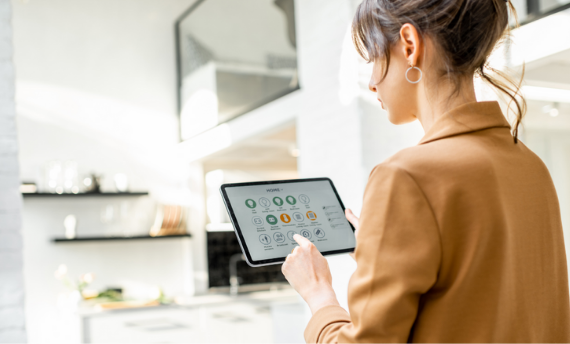Buying a new home is exciting, but imagine walking into the home you’re interested in and asking the built-in assistant in the speakers to play classical music for a little added relaxation – suddenly Tchaikovsky plays in every room of the house as you’re touring them. Maybe you’re curious how to pronounce Tchaikovsky? Again, your smart home hub is here to help. Talk about a good first impression – welcome to the Smart Home.
It’s not breaking news that these technologies exist, but with many people spending more time at home – as remote work becomes more permanent for many – smart home features will be all the more important for homebuyers. Syncing up work life and personal life with smart home features can make life a little bit easier and save money too. According to Realtor.com for 2020, 4-in-10 Americans were found to be considering the addition of smart tech to their home and more than 60% wanted to add more to their current setup. Orders for smart home tech are expected to double from 2019 to 2023, according to eMarketer, so it appears that 2021 is going to push demand even further.
Smart Homes Make for Happy Homebuyers (& Real Estate Agents Too)
Better tech in a home leads to a quicker closing and happier homebuyers. A survey conducted by Coldwell Banker & T3 Sixty revealed that 82% of agents and brokers said that smart home technology streamlines a home sale. It’s important for real estate agents to really understand the value of smart home technology and highlight it as a selling point in the home.
Having a smart home can also boost the value of a not-so-great listing more than spending money on landscaping, for example, as tech appeal is starting to trump curb appeal. All these points of technology allow for a stronger conversation to take place between real estate agents and interested buyers as well. People love pizazz, right? Wow them with smart home technology.
As consumers understand the features & benefits related to smart home tech, especially those that save them time and money, they’re beginning to seek them out in their own spaces. Energy efficiency, for example, ranked at the top of important smart home features across the board, according to a 2020 Realtor.com survey.
Other benefits of smart home tech include:
- Upgraded security with smart-enabled internal/external cameras
- Lower installation costs with easy-to-install devices
- Increased productivity with remote-controlled devices
- Better health with smart-enabled air filtration, water filtration, and more
- Enhanced comfort at home with adaptive lighting, heating, and cooling
- Improved productivity with whole-house WiFi connectivity and other technologies









